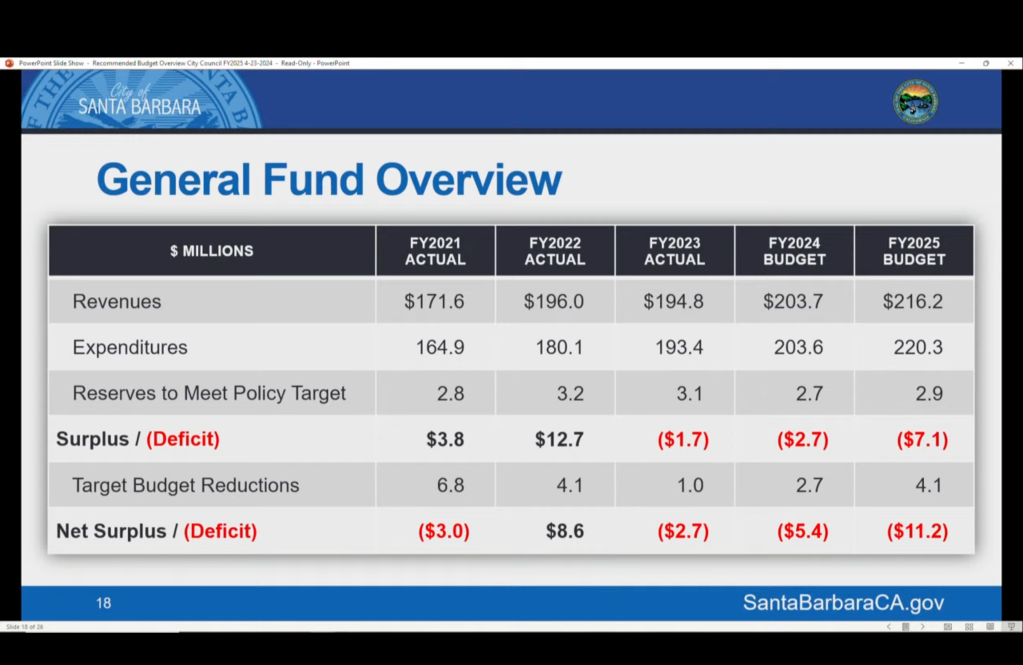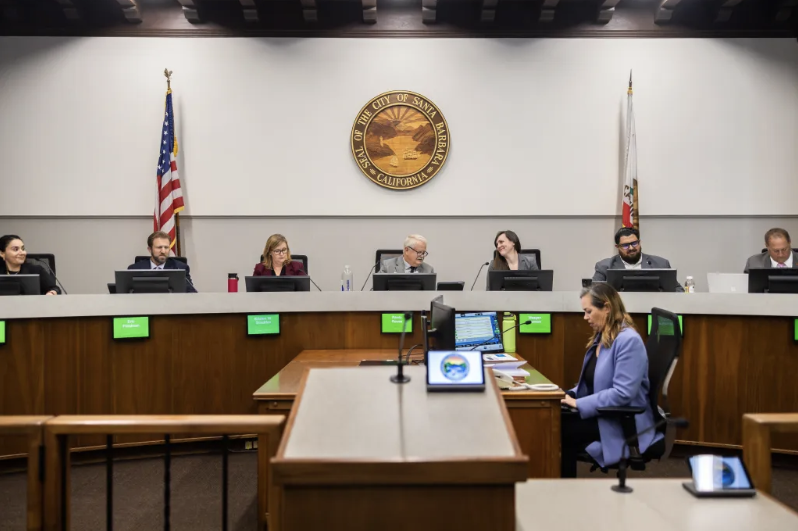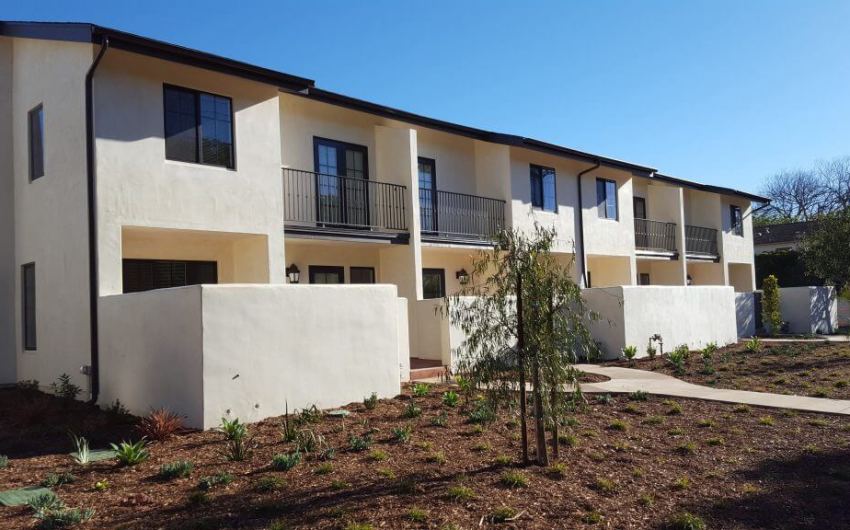It’s budget season, and in the City of Santa Barbara, the forecast for 2025 is gloomy. Despite a $12.5 million increase in revenues from 2024, the city is projecting a $16.7 bump in expenditures in 2025, leaving the city with an operating deficit of $7.1 million — worse than the operating deficits of the past two years combined and a far cry from the $12.7 million surplus the city reported in 2022.
And that’s a hopeful estimate, assuming the city takes $4.1 million in budget cuts. As Councilmember Eric Friedman warned during a council review on Tuesday, April 23, if the city decides not to make budget reductions, or if revenues don’t come in as projected, that deficit may creep closer to $10 million.
“The deficit is real,” Friedman said. “It’s something that’s been building, and a lot of it is out of our control in terms of costs that are on us.”
“I think it’s prudent to look at the upper end of the range — which is $7.1 million to $10 million,” he said, “so that we set the proper expectation going into the budget deliberations, for the council and for the public.”
The City’s Finance Director Keith DeMartini and Budget Manager Natalija Glusac presented the Fiscal Year 2025 operating budget, which will be finalized over several public hearings in the next two months and adopted by City Council on June 11.
The 2025 budget shows the city’s revenues continue to increase each year, from $194.8 million in 2023 to a projected $216.2 million in 2025. Property taxes are still the city’s biggest revenue source with a projected $51 million in 2025, followed by Measure C taxes ($33.4 million), sales tax ($31.2 million), and Transient Occupancy Taxes ($28.7 million).

But expenditures have increased at a higher rate, from $193.4 million in 2023 to a projected $220.3 million in 2025, forcing the city to dip into an operating deficit for the past three years straight. In 2023, the deficit was $1.7 million; last year, it grew to $2.7 million.
A major factor in the city’s spending is the consistent increase in salaries, benefits, and pension costs, which grew from $105.7 million in 2021 to a projected $142.1 million in 2025 — representing 65 percent of the city’s total expenditures.
This trend is expected to continue for the next few years. According to the budget forecast, the city’s expenditures could surpass $250 million by 2028, while revenues will likely remain under $240 million.
With this in mind, City Administrator Sarah Knecht stressed the importance of reducing operating expenses and finding “new and streamlined ways of serving the public in order to balance the city’s operating budget.”
This includes tapping into reserve funds, Knecht said, “to sustain operations and continue providing the same level of services the community expects.”
But for some departments, simply sustaining the same services may not be enough. Several library representatives, including Library Advisory Board Chair Margaret Crocco and Santa Barbara Library Foundation Director Lauren Trujillo, spoke during public comment to make the case for more funding for the city’s public library.
Each department will have its chance to come before City Council over the next few weeks, as the city continues budget deliberations and deciding which services will have to be streamlined, cut, and which other sources of revenues may be tapped, before the final budget is adopted in June.
Visit the city website to view the recommended 2025 operating budget, including a breakdown of projected revenues and expenditures for each department.











You must be logged in to post a comment.